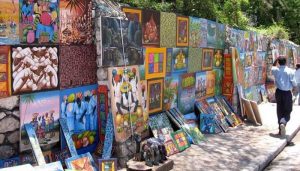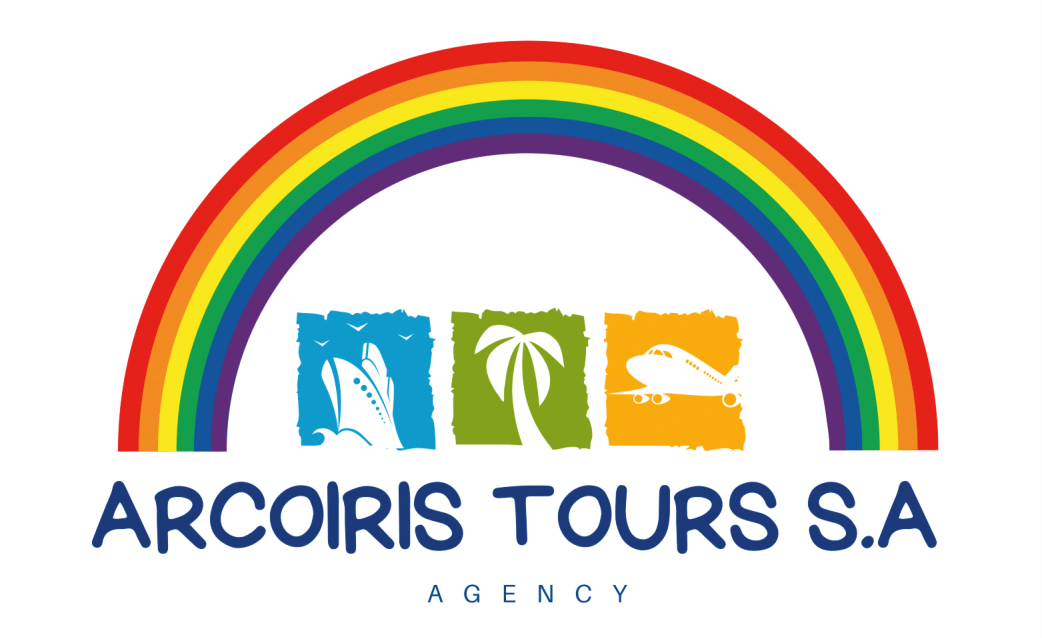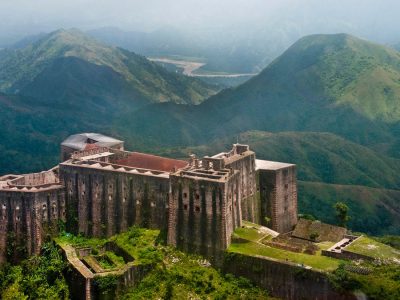Haití
Haiti is often associated with earthquakes, epidemics, hurricanes, and dictatorships; but some time ago this Caribbean territory was a privileged tourist destination and now it tries to rescue that tradition.
Data from the Haitian Ministry of Tourism indicate that one million people a year visit the country, many of them on cruises. It is known that several hotel chains are building new establishments and the shipping companies have plans to build their own ports and tourist complexes - such as in the north, on Isla de la Tortuga - or improve existing ones, such as Coco Plage, near Labadie , In the south.
A Haitian saying, which could be applied to tourism, says: "little by little, the bird builds its nest." At least since 2013, when Canada's first tourist groups landed in Port-au-Prince, the country entered the radar of the specialized media, from Travel Channel to Condé Nast Traveler, among others. In 2013, the writer Paul Clammer published an updated guide to Haiti, reissued in 2017, in the renowned English publisher Bradt. It is an indicator, since guides about the country were not published at least since the 1980s.
| Languages spoken | Criollo haitiano, Francés |
|---|---|
| Currency used | Gourde haitiano (G, HTG) |
| Country name | Haiti |
Sports & nature
Floors
The soils that predominate are the pedalfers, which correspond to the climatic conditions of the island; and they are, from lateritic in the depressions to podzolic in the mountain ranges; but alluvials in the plains are also important; those that have been studied the most, in the Artibonito and l'Estére river basins, continue to be of great agricultural utility, despite the exhaustive exploitation that has been made of them.
Flora
Haiti's nature is rich and varied, with a predominance of humid and low regions in which the tropical forest flourishes, abundant in noble woods such as ebony and mahogany. Haitian territory is home to more than 4,000 plant species, of which 36% are endemic (indigenous). The latter have great similarity with those of the rest of the continent, since they come from the geological eras in which the island was linked to the continental mass.
Of the endemic species, orchids stand out, of which 67 genera and more than 300 classified varieties are counted, such as the Oncidium Hanekenií (shaped like a tiny "cacata"), the Polyradition Lindenií (in the form of a toad), the Oncidium Variegatum ( in the form of an angel) or Leochilus Laniatus (which appears to be the shape of a nun).
On the other hand, they are native species, the royal palm, the guayacán, the custard apple, the yucca, the peanut, the tobacco, the corn, the sweet potato and the guava, among other species. Plants such as cocoa, avocado, citrus, coffee, sugar cane or bananas were introduced by both indigenous people in their migrations and by Spaniards during the times of colonization.

Nightlife info
A vibrant and colorful cultural paradise, Little Haiti is where you will find live music, bookstores, art galleries, voodoo shops, murals, and even a great cultural center. Go to this popular Miami neighborhood for a popular Scene bar, laid-back pubs and fine restaurants with global flavors.
Little Haiti The dynamic impact on Miami's thriving independent music. Scene is centered on NE 2nd Avenue and NE 55th Street, where Churchill’s Pub and Sweat Records are located. Little Haiti fosters a unique sound: a mix of jazz, Afro-Cuban, rap, electronic, and everything in between.
Culture and history info
HAITIAN CULTURE, VOODOO AND CARNIVAL
Hollywood clichés should be left aside when talking about voodoo religion. It is an essential part of Haitian culture, as is the Creole language spoken by millions of people. Voodoo temples painted in bright colors and with the image of a "Iua" -one of the saints of this religion- abound in all corners of the country. Those tourists who so wish can participate in voodoo ceremonies: a bottle of rum is sometimes the price of admission. The most popular voodoo festival occurs in November, is the "Fete Gede", dedicated to the dead. The faithful of Baron Samedi, one of the "luas" of the voodoo pantheon, drink rum and dance in cemeteries, to celebrate life and remember their loved ones.
Haiti is a small country but very culturally rich. In February, the carnival attracts many tourists. The most spectacular for its costumes is the Jacmel carnival, an old coffee port in southern Haiti. There the remarkable French-style colonial architecture will surprise more than one. Jacmel is also famous for his crafts, for example, the figures "in papier maché". Near Jacmel are the Bassin Bleu waterfalls, there are also postcard beaches in neighboring Port Salut.
In short, on the outskirts of Port-au-Prince, towards Tabarre, there is the Caña de Azúcar Historical Park, located in what was a French plantation from the year 1700. Here the harsh history of Haitian sugar is told and you can see the machinery of the sugar mill created in 1901. Today the facilities are also the site of the jazza festival in Port-au-Prince. On this tour, there will be some who remember that the father of the writer Alexandre Dumas - the famous author of "The Three Musketeers" - was born in Haiti. He was the son of a French slave and aristocrat and would become one of the generals favored by Napoleon, at least for a time.



